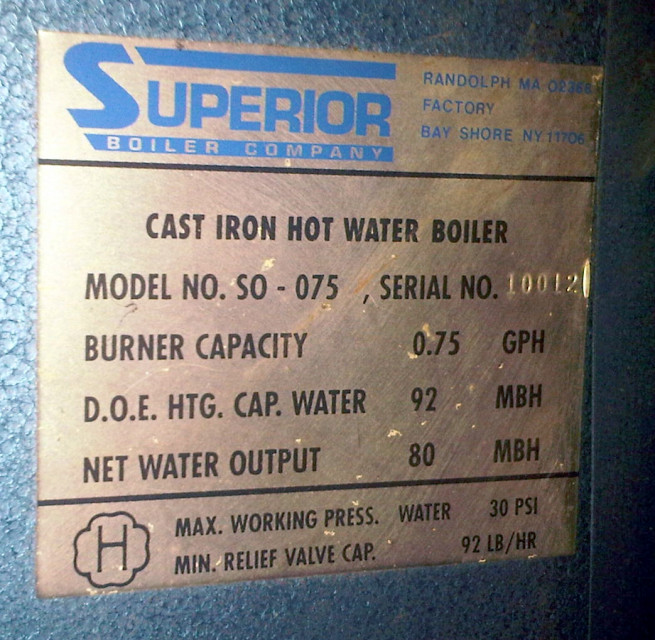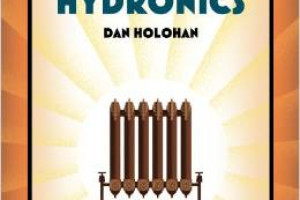In this presentation, Gary Klein shares important information about air source heat pump water heaters (HPWH), with particular attention paid to where the warm air comes ...
Boiler Ratings Explained

When you look in a boiler manufacturer's catalog you'll see that there are several types of ratings for each boiler.
There's the Input rating, the Gross Output rating (which some call the D.O.E. Heating Capacity) and then there's the Net Output rating. You pick one or another to size a boiler. But are you sure you picked the right one?
To make thing even more confusing, some of the ratings are shown as BTUH (British Thermal Units per Hour), while others are listed as Square Feet Equivalent Direct Radiation, or EDR for short (and here you'll find different numbers for water and steam boilers). Then we have this other column for Gallons Per Hour and another for Therms.
Okay, here's what's going on.
You have three basic columns. First there's Input. That's where you'll probably find the ratings in Gallons Per Hour or Therms because this column has to do with fire. What you're seeing here is the amount of heat that the fire is putting into the boiler. You PUT the fire IN and that's why they call it Input. Simple, right?
But, not all the heat that goes into the boiler winds up in the water. Nope, some of that heat goes up the chimney and is lost forever. There's also some more heat lost through the boiler's jacket, but this is one of those vague areas because if the boiler is inside the house can we really say that the jacket losses are gone for good? And there are some boiler manufacturers who will tell you that their jacket insulation is so fabulous that BTUs hardly ever chose to leave that way.
Next, we get to Gross Output. Gross is what's left over after the boiler has suffered the loss of heat up the chimney and through the jacket. Now, this term can be a bit confusing because Gross usually implies that you're dealing with the whole enchilada, as in Gross Income (which means before taxes, right?). But in the World of Hydronics, Gross means, "what's left over" instead of "what you start with." Or to put it another way, Gross means "after taxes." "Taxes," in this case, being the price you pay when you send some heat up the chimney and through the jacket. I know this doesn't make much sense, but if it did, everyone would be doing it, so look at the bright side. Just remember this. Gross Output is the amount of heat that rides on the water that's flowing out of the boiler. It's the heat that's available to the whole system (and maybe that's why we call it Gross).
Ready for the next factoid? Here goes. The difference between the Input and the Gross Output represents the combustion efficiency of the boiler. For instance, if a boiler has an Input of 200,000 BTUH and a Gross Output of 160,000 BTUH, that boiler would be running at 80% combustion efficiency. It's not hard to figure this out. Just divide the big number into the little number and then multiply the result by 100 to get a percentage.
And this brings us to Net Output. "Net" is what you're left with after taxes, right? What's important to know here is that Net Output is always going to be less than the Gross Output because there are two things going on out there in the system.
First, we have the piping losses. By this, I mean that it's going to take a certain amount of heat to bring the pipe from room temperature up to the temperature of the water that's flowing through the pipes. And this is where things can get a bit sketchy. Are those pipes inside the living space? And if they are is that heat really lost? Are those pipes insulated? And if so, how insulated are they? Is there 180°F water flowing through that pipe out to baseboard convectors? Or is there 110°F water running through that pipe to a radiant panel? All of these variables should make a difference, shouldn't they?
And consider this. Part of this piping loss business has nothing to do with the heat loss of the water into the air. It has to do with raising the temperature of hundreds (or perhaps thousands!) of pounds of steel and copper from room temperature to the temperature of the water that's flowing through the pipes. This isn't about heat loss. This is about heating a LOT of metal. So . . . is the boiler a cold-start boiler (which means you have metal to heat every time it starts), or is the boiler operating on outdoor reset (where there would be less of a temperature rise each time). All of this changes depending on how cold it is outside, of course. The boiler will run longer on the colder days, and that will keep the metal hotter for a longer time.
Still with me? Okay, that brings us to the part that fascinates me the most - the Pickup Factor. You should know that this has nothing to do with the pipes; it has to do with the amount of water that's inside the pipes and the radiators when the boiler first starts. The boiler has to heat all that water from room temperature to, let's say, 180 degrees. That's going to take some doing if there's a lot of water in the system. Consider an old gravity hot water system, for example. You could have six- or eight-inch pipe in some of those old beauties and that represents a bodacious amount of water. You could also have radiators that are as big on the inside as a room at the Holiday Inn.
If this gives you pause, know that you are not the first to show concern. Check this out. In 1940, the factor that manufacturers used to designate the difference between a boiler's Net Output and the Gross Output was 1.56. In other words, you figured out the building's heat loss. Then you selected your radiators to overcome that heat loss. You took that installed radiation load in BTUH (or Square Feet EDR) and multiplied it by a factor of 1.56 to get the boiler's Gross Output rating. That's a pretty hefty increase, isn't it? You know why they did it this way? First, because they weren't sure what they were doing (all of this was so new to them). Second, because they were dealing with a lot of gravity systems that contained a bodacious amount of water.
In 1945, they all figured out that they were probably being too conservative so they reduced the Pickup Factor from 1.56 to 1.33. They realized this one day whilst trying to install a boiler that was the size of Rhode Island into Mrs. Murphy's two-bedroom bungalow.
Then, in 1967, they further reduced the Pickup Factor from 1.33 to 1.15, but only for hot water boilers. They let the factor for steam boiler sizing remain at 1.33 because steam piping is bigger than hot water piping. This is because steam is bigger than water. There's one problem here, though. Steam pipes contain hardly any water. But don't let that trouble you. Life is too short to fret about such things.
What you might want to fret about, though, are those replacement hot-water boilers that serve old systems. You know the ones with large pipes and really big radiators? There sure is a lot of water in those systems, and that 1.15 pick-up factor isn't going to be enough to take on all that extra water. And this is why boiler manufacturers are pushing primary-secondary pumping and boiler-bypass piping these days. Without one or the other, that new boiler you installed will probably never shut off. You were looking for high efficiency but you got higher fuel bills instead. Uh oh.
And speaking of modern systems, those pipes are well-insulated and they're all inside the building. The system is probably running on outdoor-reset control, so the water temperature is pretty tepid most of the time. It could be a radiant system that's running on water cool enough to shower under. We're using an indirect domestic hot water heater. That pretty much removes the domestic load from the equation because we're also using a priority relay that plays with time. We've also got a half-dozen heating zones on this job because people are rarely in all the rooms at the same time. Heck, I once met a guy who regularly removes 10% of the total heating load for each zone he installs. He does this up to 30% and he has never once gotten into a jam.
And the piping we're using nowadays is pretty small, isn't it?
So maybe the Piping and Pickup Factor needs to be looked at again.
Or maybe not.
It sure is something to think about, though, isn't it?
Leave a comment
Related Posts
This all-technical, three-hour seminar will make you familiar with the many types of old steam heating systems and what goes wrong with them. Dan Holohan’s easy-to-follow...

In this all-technical three-hour seminar, Dan Holohan will give you a Liberal Arts education in those Classic Hydronics systems. He’ll have you seeing inside the pipes as...